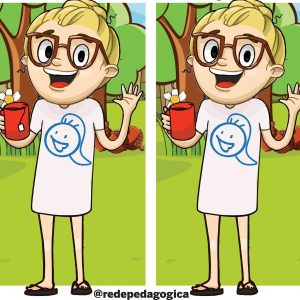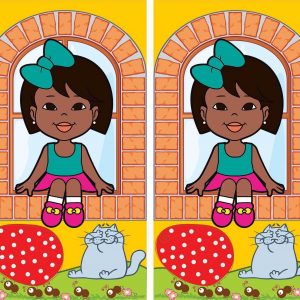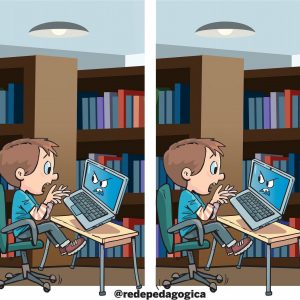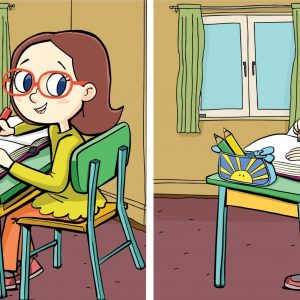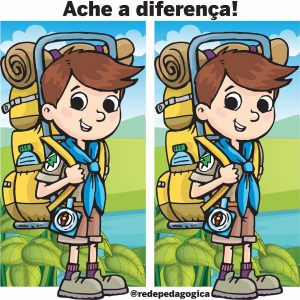Spot the Difference: How a Simple Puzzle Game Sharpens Your Mind and Sparks Joy
Ever found yourself staring at two nearly identical pictures, trying to figure out what’s changed? Maybe it’s a missing leaf, a swapped color, or a tiny detail that seems off. That’s the magic of “Spot the Difference” puzzles. In the image above, we see a joyful baker braiding dough—twice. At first glance, the pictures look the same, but a closer look reveals subtle differences. These kinds of games aren’t just fun—they’re powerful tools for improving focus, memory, and mental agility.
Let’s break down how something so playful can offer such meaningful benefits for kids and adults alike.

What Are Spot the Difference Games and Why Do We Love Them?
Spot the Difference puzzles are classic visual games where two versions of an image are shown side by side. Your job? Find all the little tweaks between the two. It could be a missing object, a different shape, or even a flipped detail. Think of it like detective work for your brain.
They’re universally loved for a reason—they’re easy to start, challenging to master, and ridiculously satisfying to complete. And whether you’re 7 or 70, that “aha!” moment when you find a difference never gets old.
Training Your Brain One Puzzle at a Time
Don’t let the simplicity fool you—Spot the Difference games are secretly brain workouts. Let’s dive into how these puzzles benefit your mind.

Boosts Concentration and Visual Focus
These puzzles force you to really slow down and observe. In today’s world of instant everything, focusing on something for more than a few seconds is a skill—and Spot the Difference makes you do just that. Your eyes dart from detail to detail, and your brain stays alert, making concentration sharper with each round.
Improves Memory and Visual Recall
As you scan between images, your brain has to remember what you just saw and compare it quickly. That back-and-forth builds up visual memory. Over time, you get better at spotting patterns and recalling specific details, even outside of games. It’s like your brain builds a mental “zoom lens.”

Encourages Patience and Persistence
Not every difference jumps out at you. Sometimes, you’ll stare at the image and think, “There’s nothing different here!” But you keep going, scanning every inch until suddenly—you spot it. That’s patience in action. These games train your brain to not give up easily, a skill that’s helpful in school, work, and life.
More Than Fun: Spot the Difference for Kids’ Development
If you’re looking for a screen-friendly activity that helps children grow, Spot the Difference is a winner.
- Visual Learning: Kids learn best with visuals, and these puzzles teach them to look carefully, compare, and analyze.
- Fine Motor and Hand-Eye Coordination: Many of these games are interactive—dragging or tapping differences—which enhances coordination.
- Early Problem-Solving Skills: It’s not just about seeing; it’s about figuring out. What’s changed? What’s missing? These questions trigger the brain’s problem-solving circuits.
It’s educational disguised as fun—and that’s the best kind of learning.
Spot the Difference Games as a Family Bonding Activity
Games like the one in the image above, where a warm and welcoming baker prepares dough, can be a great moment to connect with your kids, siblings, or even grandparents. Sit down, put the image up, and turn it into a family challenge: “Let’s find five differences together!”
You’ll be surprised how quickly conversation starts flowing. Laughter, teamwork, and even a little healthy competition—it all builds stronger relationships.

Taking It to the Next Level: Add Some Spice to the Game
Want to make your Spot the Difference experience even more exciting? Try these twists:
- Race Against Time: Set a timer. Can you find all the differences in two minutes? The pressure adds thrill.
- Hard Mode: Cover half the image and try to find differences by memory.
- Create Your Own: Kids love drawing—why not have them create their own difference puzzle? It encourages creativity and attention to detail.
These versions help keep the challenge fresh and increase the difficulty for more seasoned players.
Why Adults Shouldn’t Skip These Puzzles Either
We often think of Spot the Difference as a kids’ activity, but adults stand to benefit too.
- Mental Fitness: It’s like lifting weights for your brain. Regular mental challenges help keep your cognitive functions sharp and delay age-related decline.
- Stress Relief: Focusing on something light but challenging is an excellent way to unplug from daily stress and give your mind a reset.
- Mindfulness Practice: Observing carefully, slowing down, and being present—it’s everything mindfulness stands for, wrapped in a game.
So don’t hesitate to grab a puzzle and dive in. You’ll feel calmer, sharper, and maybe even a little nostalgic.

Conclusion: Small Differences, Big Impact
At first glance, the two images of the baker might seem identical, but a closer look reveals the hidden fun. And that’s the beauty of Spot the Difference—it makes us slow down, look closer, and engage our minds. Whether you’re playing to relax, challenge yourself, or help a child learn through play, these puzzles deliver more than just entertainment.
They train your brain, boost your mood, and bring people together—one small detail at a time. So the next time you need a little mental pick-me-up or a break from the screen, reach for a Spot the Difference puzzle and enjoy the magic hidden in plain sight.
